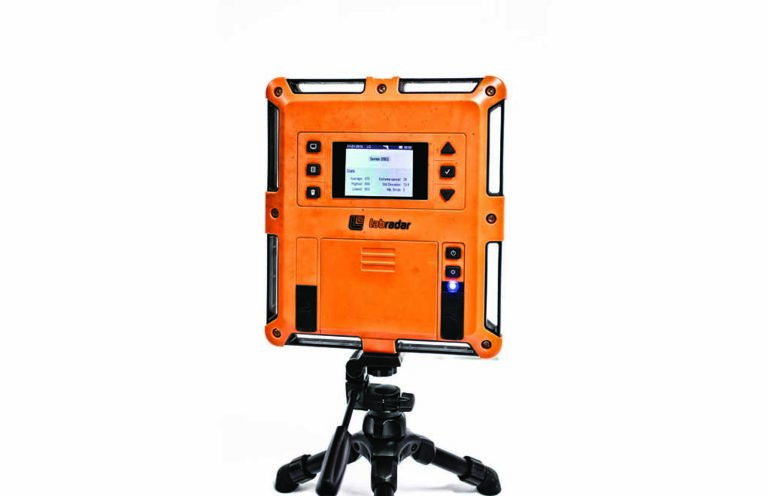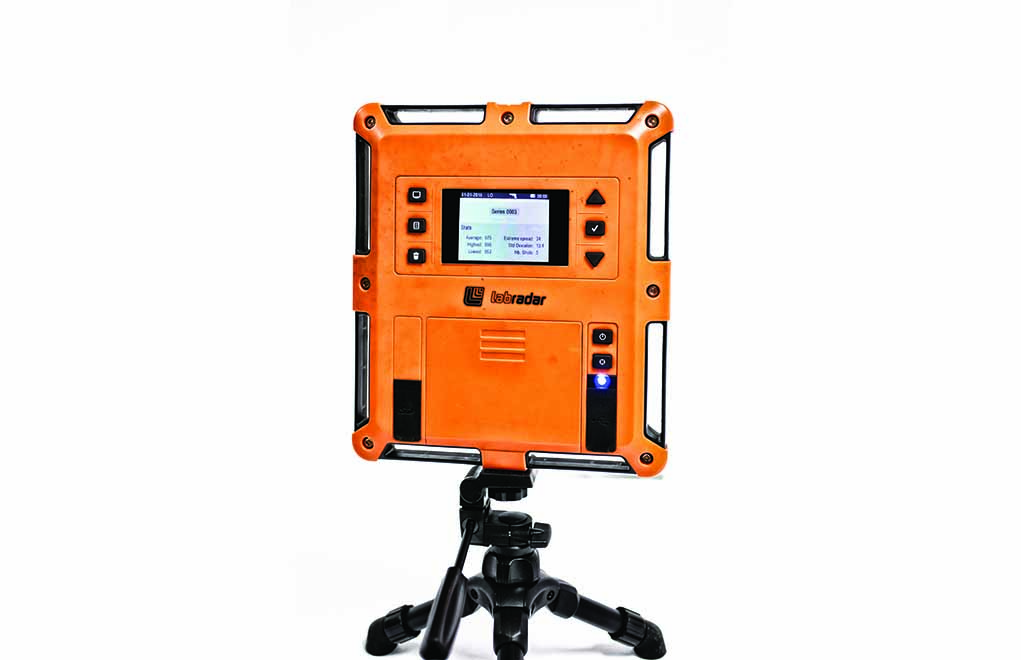

Forget traditional chronographes and their potentially shaky readings. The cutting-edge Labradar makes collecting critical data easy.
What Is The Advantage Of Labradar:
- Doesn't rely on light for readings.
- Records data at different distances, giving you a more complete picture.
- Capable of collecting the average velocity of a set, the high and low, the standard deviation, among other data.
- Unlike most chronos, the radar can collect shotgun load data.
As a gun writer, I have to chronograph constantly. And, as a long-time shooter, reloader and competitor, every chrono I’ve ever owned, I’ve shot. Every. Single. One.
Until Labradar.
The difference is that the Labradar (also known as “Big Orange”) uses radar, not skyscreens. With multiple settings, there are several ways you can use it, but I find the simplest is triggered radar. That means the vibrations—on the casing—of the sound of the shot trigger the radar pulse that then reads the bullet.
When I was using skyscreens, life could be tough. My gun club ranges are down in pits, with the berms on all sides 20 to 60 feet high and with trees on top. In the winter, I had enough light to chrono—more or less—from 10 a.m. to 2 p.m. With radar, I could chrono by the light of a full moon … or no moon at all.
Yes, It Has its Quirks
Now, the Labradar is not without its quirks. It uses six AA batteries, and they don’t last long. I keep a couple of cheap USB batteries in the chrono box. Those are the ones you can use to juice up your smartphone when the battery gets low. I routinely plug in one of these when I set up and run Big Orange off the USB battery (but you still have to have the AAs installed).
The radar beam is not wide. So, even after you’ve aimed Big Orange, you have to find the sweet spot. Once I find the spot on the backstop that works, I note where my feet are and make sure I’m always lined up the same way.
It takes a moment to read, so you can’t shoot any faster than a shot a second, if that. No big deal; I’m not trying to shoot fast when I’m chronoing.
What You Get
What you get is a system that lets you adjust many details. You can set the distance it reads from—that is, the distance of the bounce-back signal—so you’re always reading from the same point, I routinely use 15 feet at the read spot. You can also have it show you the velocity of the bullet at other distance, out to 100 yards or so, or until it loses the return signal. I’m sure others will find that useful; I just want the 15-foot number.
Expand Your Gear IQ:
- BallisticsARC: Owning The Wind With Real-Time Data
- 5 Top Barrel Cooler Options So You Don’t Get Hot Under The Collar
- 10 Pocket Holsters For Easy Everyday Carry
- Three Affordable Chronograph Options To Check Your Speed
You can also get the average velocity of a set, the high and low, the standard deviation—all the details you want or need. It’s also possible to save the data to a card and plug that into your computer later for saving, putting into a spreadsheet, etc.
There’s one more thing that makes the Labradar such a big deal: You can chrono shotgun loads. It isn’t easy for skyscreens to handle the shadows of a shotgun payload with the shot cup and maybe over-powder cards, etc. What really causes problems are the skyscreens being stripped off the rail by errant wads, cards, sabots and muzzle blast. The Labradar, like the honey badger, “don’t care.”
Storage and Tripod
I use an MTM storage box, the ACR5 Ammo Crate, to store the Labradar, batteries, tape, staple gun—you know, all the impedimenta of chronoing that you have to have (well, gun writers have to have). I also picked up a sturdy but inexpensive tripod and leave it on the shelf with the ammo crate.
In addition, I used a label-maker to mark “chrono” and “tripod” on the crate so that I know the chrono crate from the other crates (yes, I love MTM products) and as a reminder to bring the tripod.
A Clean Sweep
I walked by the Labradar booth at the SHOT show. As soon as I saw the chrono, I had to have one and asked the Labradar representative to send me one as soon as the company was sending writer’s samples. I told every gun writer I ran into that day to go find the Labradar booth.
In due time, my Big Orange arrived. I tested it, loved it and was determined to keep it (you might think that gun writers get lots of free stuff. Sometimes, we do. But some products, especially those from small makers, aren’t free).
So, when the Labradar folks named a price, I said, “Sure, I’ll send you a check.” The Labradar boss remarked, “Well, that makes it a clean sweep.” Clean sweep? Yes. You see, every gun writer Labradar had sent a sample to said they would rather pay and not send it back when they were told its price.
When a group of people—in this case, gun writers (who are universally cheap and accustomed to getting freebies)—all say, “I’ll pay,” you know it’s something worth having.
Since receiving the Labradar, I haven’t touched the skyscreen chronos, and I might just give all of them away—except one, just as an insurance policy.
The article originally appeared in the January 2020 issues of Gun Digest the Magazine.

Next Step: Get your FREE Printable Target Pack
Enhance your shooting precision with our 62 MOA Targets, perfect for rifles and handguns. Crafted in collaboration with Storm Tactical for accuracy and versatility.
Subscribe to the Gun Digest email newsletter and get your downloadable target pack sent straight to your inbox. Stay updated with the latest firearms info in the industry.

![Best Concealed Carry Guns In 2025 [Field Tested] Wilson Combat EDC X9S 1](https://gundigest.com/wp-content/uploads/Wilson-Combat-EDC-X9S-1-324x160.jpg)


![Best 9mm Carbine: Affordable PCCs [Tested] Ruger Carbine Shooting](https://gundigest.com/wp-content/uploads/Ruger-Carbine-Shooting-100x70.jpg)
![Best AR-15: Top Options Available Today [Field Tested] Harrington and Richardson PSA XM177E2 feature](https://gundigest.com/wp-content/uploads/Harrington-and-Richardson-PSA-XM177E2-feature-100x70.jpg)
